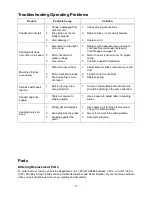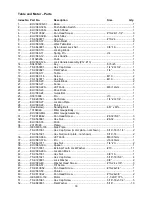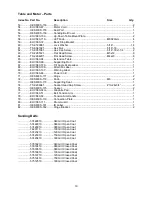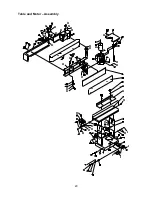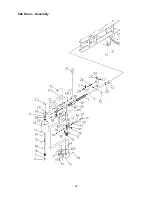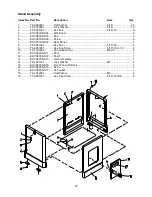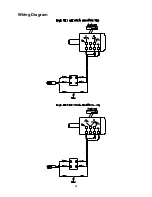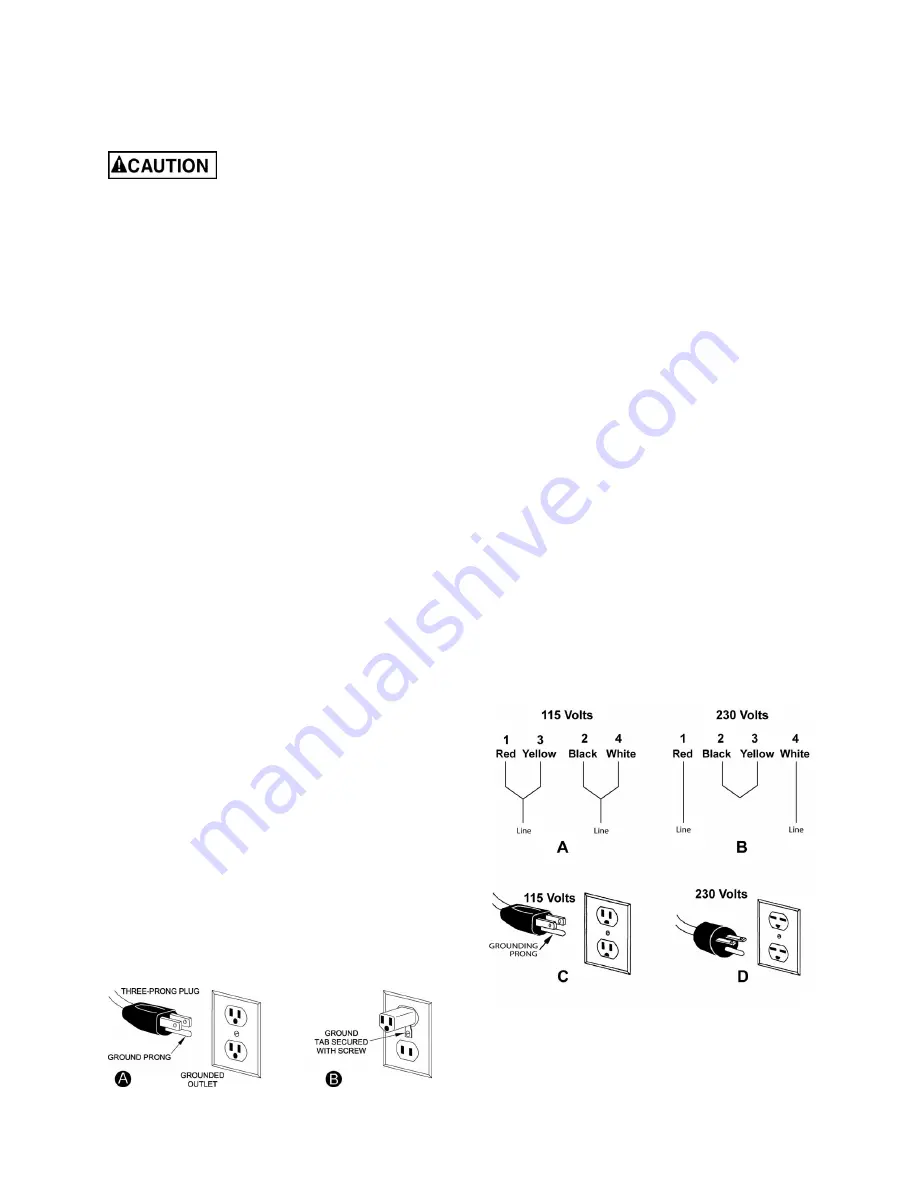
11
Electrical
Grounding Instructions
This sander must be
grounded while in use to
protect the operator from electric shock.
In the event of a malfunction or breakdown,
grounding provides a path of least resistance for
electric current to reduce the risk of electric
shock. This tool is equipped with an electric
cord having an equipment-grounding conductor
and a grounding plug. The plug must be
plugged into a matching outlet that is properly
installed and grounded in accordance with all
local codes and ordinances.
Do not modify the plug provided. If it will not fit
the outlet, have the proper outlet installed by a
qualified electrician. Improper connection of the
equipment-grounding conductor can result in a
risk of electric shock. The conductor, with
insulation having an outer surface that is green
with or without yellow stripes, is the equipment-
grounding conductor. If repair or replacement of
the electric cord or plug is necessary, do not
connect the equipment-grounding conductor to a
live terminal.
Check with a qualified electrician or service
personnel if the grounding instructions are not
completely understood, or if in doubt as to
whether the tool is properly grounded. Use only
three wire extension cords that have three-prong
grounding plugs and three-pole receptacles that
accept the tool’s plug.
Repair or replace a damaged or worn cord
immediately.
115 Volt Operation
Referring to Figure 8:
As received from the factory, your Oscillating
Edge Sander is ready to run at 115-volt
operation. This Oscillating Edge Sander, when
wired for 115 volt, is intended for use on a circuit
that has an outlet and a plug that looks like the
one illustrated in (A). A temporary adapter,
which looks like the adapter shown in (B), may
be used to connect this plug to a two-pole
receptacle if a properly grounded outlet is not
available.
Figure 8
The temporary adapter should only be used until
a properly grounded outlet can be installed by a
qualified electrician. This adapter is not
applicable in Canada. The green colored rigid
ear, lug, or tab, extending from the adapter,
must be connected to a permanent ground such
as a properly grounded outlet box.
230 Volt Operation
Referring to Figure 9:
If 230V, single-phase operation is desired, the
following instructions must be followed:
1. Disconnect the machine from the power
source.
2. The JET Oscillating Edge Sander motor has
four numbered leads that are factory
connected for 115V operation, as shown in
(A). For 230V operation reconnect the leads
as shown in (B).
3. The 115V attachment plug (C) supplied with
the Oscillating Edge Sander must be
replaced with a UL/CSA listed plug suitable
for 230V operation (D). Contact your local
Authorized JET Service Center or qualified
electrician for proper procedures to install
the plug. The Oscillating Edge Sander must
comply with all local and national codes after
the 230-volt plug is installed.
4. The Oscillating Edge Sander with a 230-volt
plug should only be connected to an outlet
having the same configuration as shown in
(D). No adapter is available nor should be
used with the 230-volt plug.
Figure 9
Summary of Contents for OES-80CS
Page 20: ...20 Table and Motor Assembly...
Page 22: ...22 Idle Drum Assembly...
Page 24: ...24 Wiring Diagram...

















